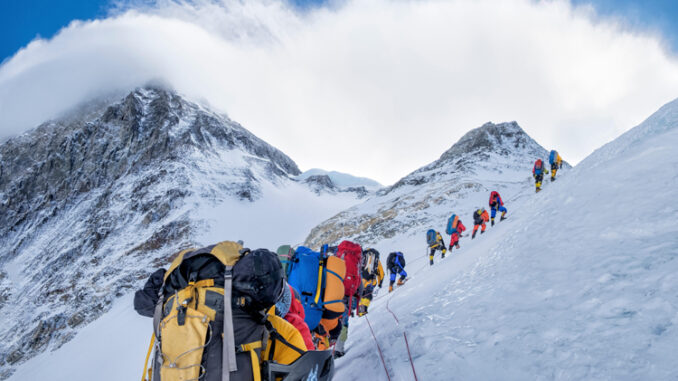
Mount Everest is the highest point on Earth. It is 8,850 meters (29,035 feet) above sea level. Reaching its majestic peak is the ultimate challenge for climbers.
With the climb comes many dangers. Avalanches are common. The weather conditions can be unpredictable. But the greatest danger is the altitude.
Altitude is height above sea level. As altitude increases, there are fewer air particles. This happens because of gravity [a pulling force between two objects]. Gravity pulls air particles close to Earth’s surface. This leaves few particles at high altitudes. As a result, high altitude air is “thinner” and there is less oxygen.
People need oxygen to survive. But at high altitudes, people struggle to get the oxygen they need. They can get altitude sickness. They might have headaches or dizziness. They might have damage to their brain and lungs. To prevent altitude sickness, climbers must climb slowly, and give their body time to adjust.
Above 8,000 meters, humans cannot survive for long. Still, hundreds of climbers reach Everest’s peak each year. How do they do it? They bring oxygen with them. This helps them survive in the high altitudes to reach the peak.
What Do You Think? Would you climb Mount Everest? Why or why not?
Photo Credit: Alun Richardson/Westend61 GmbH/Alamy Stock Photo



